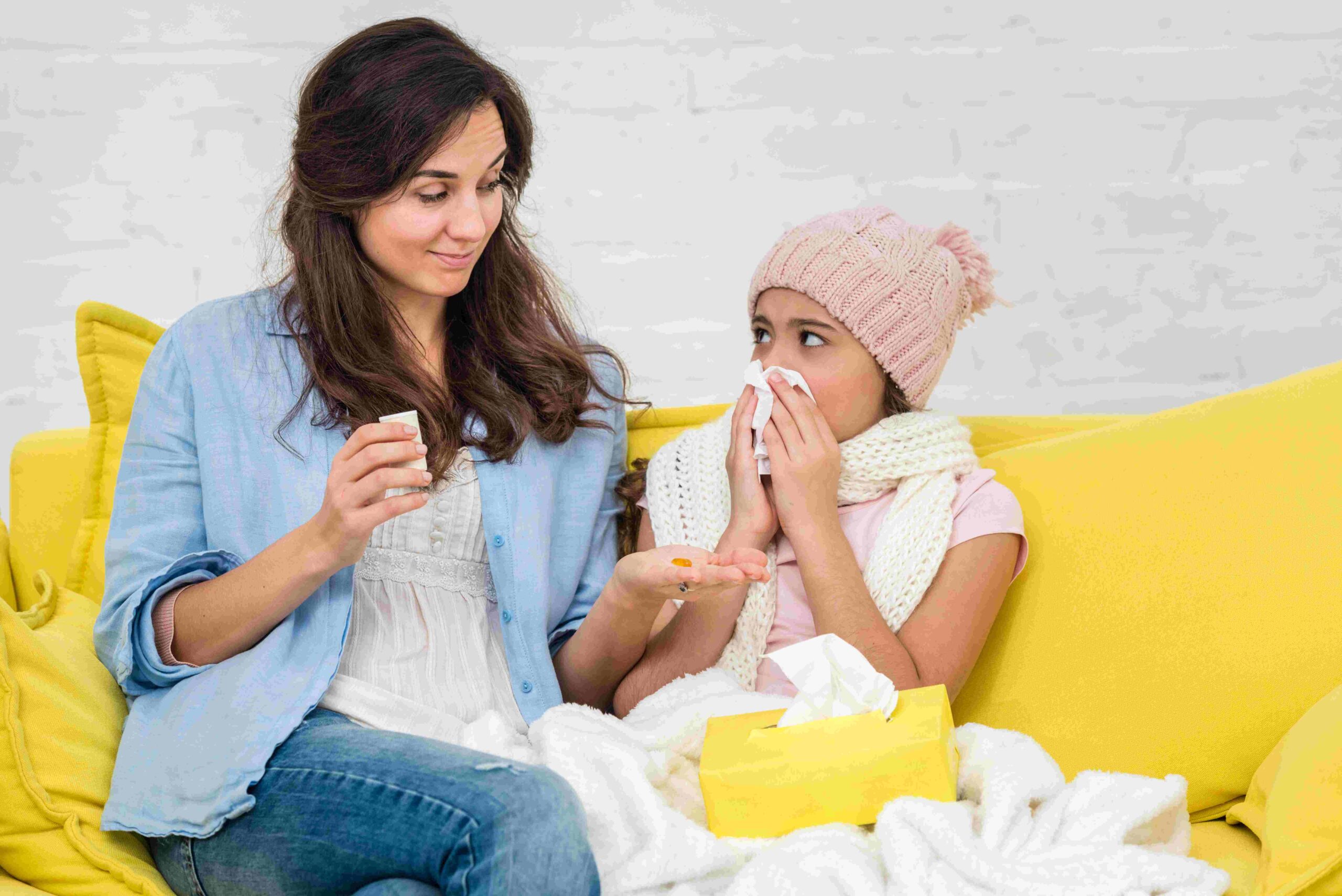When parents witness their child experiencing symptoms like cold, cough, fever, or flu, it is common for them to attribute it to a weakened immune system. However, there are rare instances where a child endures prolonged suffering due to an overactive immune response, accompanied by misdiagnosis and incorrect treatment.
This case study explores Hypereosinophilia, a medical condition characterized by an unexplained elevation in Eosinophils, a type of disease-fighting white blood cell. The condition disrupts the normal functioning of the body by causing an abnormal increase in the white blood cell count, leading to various complications and disturbances in bodily processes.
Sanika, a three-year-old, had been grappling with recurring issues of a runny nose, sneezing, and cough for the past six months. Initially, these symptoms were considered a typical case of cough and cold and were treated with cough syrups and antiallergic medicines. Unfortunately, the relief was short-lived, and the cycle repeated itself endlessly. The concerned mother left no stone unturned, visiting general practitioners, pediatricians, and specialists in search of a cure for her child’s ailment. After numerous tests and examinations, the blood test results revealed an absolute eosinophil count of 1752 cells/cumm.
A cloud of panic engulfed the parents, prompting them to rush back to the specialist, only to be disappointed time and again, until the specialist ordered a bone marrow test to rule out the possibility of cancer. Specialists often explore extreme possibilities to eliminate any serious conditions. It is a crucial aspect of their job, as even the slightest negligence or oversight can prove fatal. The mere mention of cancer was enough to shatter the mother’s composure. Sleepless nights and constant anxiety barely scratched the surface of her anguish, as haunting thoughts of pain and separation created unbearable turbulence in her mind.
Before succumbing to their cruel fate, the parents decided to give Ayurveda a final chance. Describing her daughter’s symptoms and recounting months of futile attempts, the mother broke down in tears, pleading for a permanent cure for her little girl. As I carefully reviewed the reports, the high count of absolute blood eosinophils caught my attention. Ideally, the count should be below 500, and exceeding this threshold is generally considered eosinophilia. If the count remains above 1,500 for several months, it is referred to as hypereosinophilia.
Hypereosinophilia, a haunting enigma, that haunts the innocent souls of children, unleashes an unruly tempest within their fragile frames. It is a relentless storm, where the immune system runs rampant, wreaking havoc on delicate organs. Symptoms emerge innocently, disguising the impending chaos—a runny nose, incessant sneezing, and an unyielding cough.
Delving deeper, I sought to uncover the underlying cause of Sanika’s condition and inquired about the details of her symptoms. As I waited for their response, Sanika’s father began sneezing incessantly, with over fifteen sneezes in rapid succession, alerting me to the possibility of a familial or environmental factor.
Sanika’s father revealed that the trouble began approximately seven months ago when they moved to a new apartment. Since then, the entire family had been suffering from allergic cold symptoms. The granite in their new apartment emitted coldness, and the surrounding environment was filled with dust and allergens. Even their eight-year-old son experienced recurrent colds. This clue was significant, but I needed to confirm all aspects. I inquired whether Sanika was previously unaffected before moving to the new apartment. Her mother enthusiastically affirmed that Sanika never even experienced a simple fever prior to the move.
Her husband added that their house was constantly damp, devoid of sunlight and fresh air, which had taken a toll on everyone’s health within that atmosphere. Returning to Sanika’s condition, I asked a few more general questions, and it was revealed that she often complained of itching in her eyes and ears. Her bowel movements were irregular, occurring every alternate day.
Understanding the parents’ anxiety, I proceeded to explain the details of Eosinophilia, a condition characterized by excessive production of eosinophils. In children, it is primarily caused by allergic reactions, immune conditions, and parasitic infections. Fortunately, most eosinophilia in children is often fully treatable.
After reassuring and calming the parents, I prescribed a course of Ayurvedic medicines for a duration of two months, aiming for a completely natural cure.
Considering the cold environment in their house, I advised Sanika’s parents to take certain precautions, such as:
- Strictly avoid consuming curd, bananas, deep-fried foods, ice cream, and cold foods.
- Wear socks and warm clothes to keep her body warm.
- Drink warm water regularly.
Furthermore, I provided counseling to the worried mother, urging her not to rely on internet searches for symptom analysis and assuring her that her daughter’s condition was completely curable. I had a separate conversation with her to alleviate her worries and relieve her from her state of panic.
Upon completion of the two-month course, we repeated the tests. This time, Sanika’s eosinophil count was 5%, and the absolute eosinophil count was 645. Her parents reported a significant reduction in her sneezing episodes. After re-evaluating her condition, I prescribed a new set of Ayurvedic medicines.
As scheduled, the parents returned for a follow-up after completing the second course. This time, the eosinophil count dropped to 4%, and the absolute eosinophil count was 400. The parents joyfully reported that Sanika was completely cured, and all her symptoms had vanished.
The couple was elated to witness their little girl’s recovery and see her free from the distressing symptoms. It is worth noting that Ayurvedic medicines proved effective in treating this condition that had been overlooked by specialists.
When dealing with such unique cases, it is crucial to remember the fundamentals of healthcare. While choosing child-friendly medicines poses a challenge, providing counseling and support to parents is equally essential.

